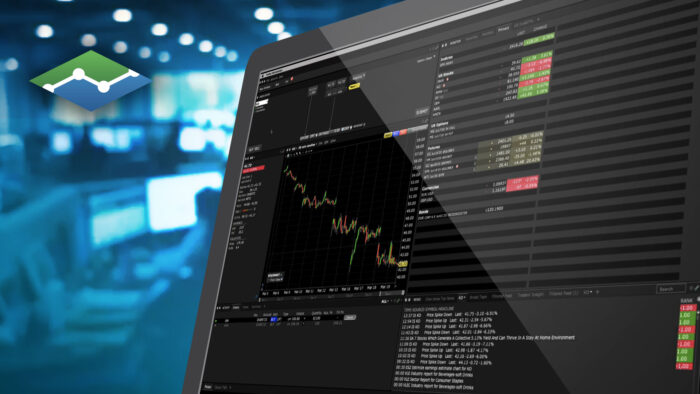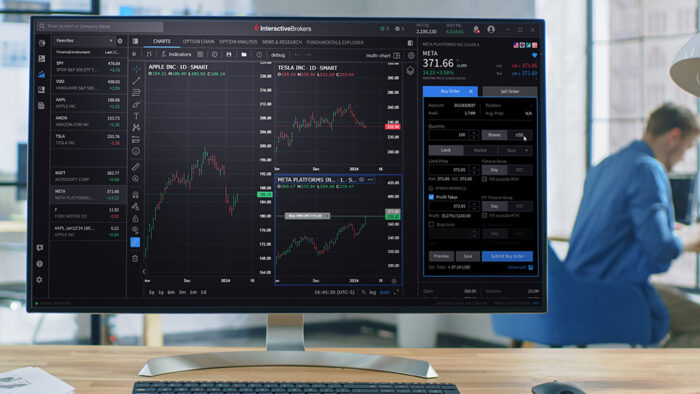Originally Posted November 14, 2023 – The data which suggests passive strategies could come unstuck.
Global stock markets have become increasingly top-heavy. At the end of October, the 10 biggest stocks in the US S&P 500 index made up a record 31% of the market (Figure 1).
This is clearly a problem for investors trying to build diversified portfolios as a significant proportion of their risk is being driven by a relatively small number of companies.
Our new research also shows that, historically, investors passively tracking the US stock market would have lost out on returns in the years following high levels of index concentration.
At a time when investors are increasing allocating to passively managed strategies at the expense of active, the tables could be set to turn.
This is not just an issue for the US stock market. The US has grown to be 63% of the global market at the end of October (MSCI All Country World Index (ACWI) index) so international investors have ended up with a lot in US stocks and, with that, a lot in just 10 stocks. Those 10 make up nearly 18% of the global market, the same as Japan, the UK, China, France, and Canada combined.


Should investors worry about index concentration when it comes to future returns?
One way to assess this is to compare the performance of a standard market cap-weighted index and its equal-weighted cousin.
For those less familiar, the equal-weighted version of the S&P 500 has 1/500 = 0.2% in every stock in the index. It has 2% in the 10 largest stocks rather than 31%. It is a more diversified version of the market.
If the equal-weighted S&P 500 is outperforming the standard S&P 500, that means that the bigger stocks are underperforming the smaller stocks within the index – and vice-versa. It means investors would be better served by allocating money away from the biggest stocks that most passive portfolios have the greatest exposure to.
Deviating from the market has been a winning strategy when concentration has been high
Our new research finds that, in the past, there has been a strong, statistically significant, relationship between the degree of concentration in the S&P 500 and how the equal-weighted S&P 500 has performed relative to the S&P 500.
The higher the concentration, the greater the outperformance of the equal-weighed S&P over the next five years (Figure 3). Deviating from the market has been a winning strategy when concentration has been high. The relationship has been weaker, though still positive when assessed over shorter investment horizons.

Based on today’s 31% weight for the 10 largest stocks, this relationship suggests that the equal-weighted S&P 500 could outperform by more than 15% a year over the next five years.
This is a strong argument that the passive, market cap-weighted, strategy favoured by many could struggle compared with others which have more freedom to deviate from such concentrated exposure.
Now, of course, this time may be different. And we are in uncharted territory to an extent. There are no data points to corroborate whether the gradient of the line will remain the same as we get further over to the far right hand side of the chart.
However, even if the magnitude is up for debate, the broad conclusion appears more robust: when the market has become very concentrated in a few stocks, investors have done better by allocating away from those stocks. The tables could be set to turn in favour of more actively managed strategies at last.
Disclosure: Schroders
Important Information: This communication is marketing material. The views and opinions contained herein are those of the author(s) on this page, and may not necessarily represent views expressed or reflected in other Schroders communications, strategies or funds. This material is intended to be for information purposes only and is not intended as promotional material in any respect. The material is not intended as an offer or solicitation for the purchase or sale of any financial instrument. It is not intended to provide and should not be relied on for accounting, legal or tax advice, or investment recommendations. Reliance should not be placed on the views and information in this document when taking individual investment and/or strategic decisions. Past performance is not a reliable indicator of future results. The value of an investment can go down as well as up and is not guaranteed. All investments involve risks including the risk of possible loss of principal. Information herein is believed to be reliable but Schroders does not warrant its completeness or accuracy. Some information quoted was obtained from external sources we consider to be reliable. No responsibility can be accepted for errors of fact obtained from third parties, and this data may change with market conditions. This does not exclude any duty or liability that Schroders has to its customers under any regulatory system. Regions/ sectors shown for illustrative purposes only and should not be viewed as a recommendation to buy/sell. The opinions in this material include some forecasted views. We believe we are basing our expectations and beliefs on reasonable assumptions within the bounds of what we currently know. However, there is no guarantee than any forecasts or opinions will be realized. These views and opinions may change. Schroder Investment Management North America Inc. is a SEC registered adviser and indirect wholly owned subsidiary of Schroders plc providing asset management products and services to clients in the US and Canada. Interactive Brokers and Schroders are not affiliated entities. Further information about Schroders can be found at www.schroders.com/us. Schroder Investment Management North America Inc. 7 Bryant Park, New York, NY, 10018-3706, (212) 641-3800.
Disclosure: Interactive Brokers
Information posted on IBKR Campus that is provided by third-parties does NOT constitute a recommendation that you should contract for the services of that third party. Third-party participants who contribute to IBKR Campus are independent of Interactive Brokers and Interactive Brokers does not make any representations or warranties concerning the services offered, their past or future performance, or the accuracy of the information provided by the third party. Past performance is no guarantee of future results.
This material is from Schroders and is being posted with its permission. The views expressed in this material are solely those of the author and/or Schroders and Interactive Brokers is not endorsing or recommending any investment or trading discussed in the material. This material is not and should not be construed as an offer to buy or sell any security. It should not be construed as research or investment advice or a recommendation to buy, sell or hold any security or commodity. This material does not and is not intended to take into account the particular financial conditions, investment objectives or requirements of individual customers. Before acting on this material, you should consider whether it is suitable for your particular circumstances and, as necessary, seek professional advice.















